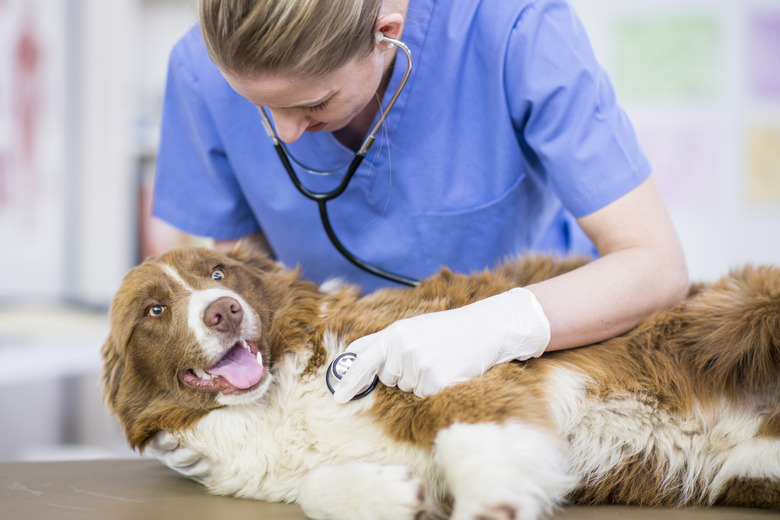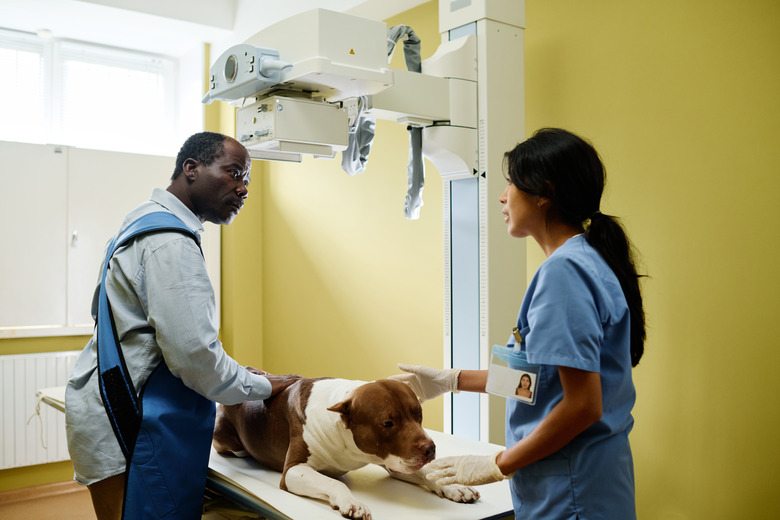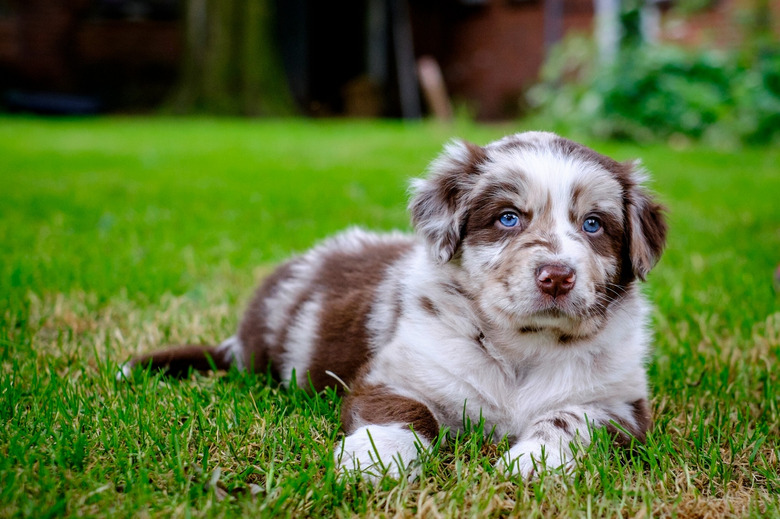How Vets Check For Parvo In Dogs
Parvo, which is short for parvovirus, and also commonly referred to as canine parvovirus or CPV, is a dangerous and highly contagious disease. Canine parvovirus can be transmitted between dogs anywhere that dogs congregate or spend time together. This could be dog parks, doggy day care centers, or other communal places such as shelters. Unfortunately, parvo can cause serious illness and can even be fatal in some cases. Preventative tools include avoiding areas where parvo is known to be present and keeping your dogs at home until they are fully vaccinated.
How do dogs get parvo?
How do dogs get parvo?
Parvo is spread through the feces of infected dogs via a fecal-oral route. This means that as non-infected dogs sniff or lick at infected feces, they expose themselves to the virus which is spread by a fecal-oral route of transmission. Additionally, canine parvovirus can spread via contaminated environments. CPV has a long survival time in the environment and is not killed by weather conditions such humidity, cold, heat, and drying.
Dogs can contract parvo in kennels or shelters where dogs are in close contact with other infected animals. The virus can also spread from contaminated surfaces such as food and water bowls, collars and leashes, and the hands and clothing of people who handle infected dogs. This also means it is possible for one dog in a household to be exposed and for other dogs within the household to become infected.
CPV can live indoors for up to two months and outdoors for several months. Because of the hardy nature of this virus and its long life, places like dog parks that are affected by parvo poop are often closed. Never ignore a warning sign about a dog park being closed due to parvo if you are looking for a place to take your dog!
How to test dogs for parvo
How to test dogs for parvo
A veterinarian will diagnose canine parvovirus by history of the illness, physical examination, and laboratory testing. Fecal testing is often administered to confirm the diagnosis. One of the most common tests used to diagnose CPV is an ELISA test, which stands for "enzyme linked immunosorbent assay," that detects if parvovirus proteins are present in the dog's feces.
The ELISA parvo test can be performed in the veterinarian's office in about 15 minutes, and the tests are very sensitive to the presence of the virus. Your veterinarian may also opt to do a blood test to establish if your dog's white blood cells are low. The virus lowers the immune system response by preventing white blood cells from being formed in the bone marrow. An active infection will show a drop in white blood cell count when the blood is examined.
While vomiting and diarrhea are common signs of parvo in dogs, other illnesses could be the cause of these symptoms, so only your veterinarian can make a proper diagnosis. A recent vaccination for the parvo virus can sometimes result in a false positive. If your dog does need to have a parvo test, let the veterinarian know if your animal has been vaccinated within five to 10 days prior.
PCR testing for parvo
PCR testing, or polymerase chain reaction testing, is another method of checking for parvo. For this test, a sample of feces is required. A laboratory test will look for evidence of parvovirus DNA in the poop. If your dog does have parvo poop, this PCR test will detect even very small amounts of the virus. This method is not done in the veterinary office while you wait. A PCR test for parvo is more accurate than the ELISA, however it takes more time to get the results back.
The antibody titer
test
Another parvo test for dogs is to run an antibody titer test. As more clinics use ELISA testing, this testing is no longer as common. The antibody titer is a blood test that detects the presence and measures the amount of antibodies within a blood sample. Since puppies infected with parvo may be too young to generate antibodies or may have a recent history of incomplete vaccination, antibody titers can be challenging to interpret.
Parvo in puppies
Parvo in puppies
Puppies are most vulnerable to parvo. Parvo in puppies generally occurs in puppies who are six weeks to six months old and are unvaccinated or who are not completely vaccinated. Puppies can start getting their shots at six weeks of age. Puppies should receive parvovirus vaccines every three to four weeks beginning at six weeks old until about 16 weeks old. After the final vaccine in the initial series, they need to receive a booster one year later, followed by a booster every three years.
If you have a new puppy in your house, keep them protected from places like dog parks where a lot of other animals go until they are able to be fully vaccinated, which means receiving a minimum of three shots, depending their age and risk of contracting parvo.
Parvo symptoms to watch for in dogs
Parvo symptoms to watch for in dogs
Parvo affects the cells that line the intestines. This is why diarrhea and other intestinal issues are among the first to appear after infection. Parvo symptoms progress rapidly once they do start to show up. Additionally, most deaths from parvovirus occur within 48 to 72 hours following the appearance of symptoms. Parvo incubates for five to 10 days. Your dog will begin to show symptoms within 10 days of being exposed to the parvo virus.
The most common symptoms are fever, lethargy, vomiting, and diarrhea. If you suspect your dog has parvo or was exposed, it is crucial to get your pup to the veterinarian immediately. Time is of the essence since parvo is considered a medical emergency, so the sooner you seek veterinary care , the better.
There are several symptoms of parvo in puppies. Any of these symptoms could be serious, so the sooner you get your puppy to the veterinarian the better:
- Bloody diarrhea
- Vomiting
- Fever
- Low body temperature (hypothermia)
- Lethargy
- Loss of appetite
- Abdominal pain and bloating
- Dehydration
If you think your puppy has been exposed to parvo, let the veterinarian know when you call because they will want to limit the possibility of other dogs being exposed to it while you are having your visit.
Dog breeds at risk of parvo
Dog breeds at risk of parvo
Certain dog breeds are more likely to be vulnerable to parvo than other dog breeds. These breeds seem to be at increased risk for parvo for an unknown reason:
- Rottweilers
- Doberman pinschers
- American Staffordshire terriers
- English springer spaniels
- German shepherds
- Labrador retrievers
However, it is important to note that all dogs, regardless of their breed, can be at risk of parvo. Always keep your dog current on vaccine boosters. Any dogs that are unvaccinated and puppies younger than four months old are especially at risk of parvo, although any dog who has not been protected by vaccines can contract CPV.
Is there a cure for parvo in dogs?
Is there a cure for parvo in dogs?
Unfortunately, there is no drug or treatment option available that kills the parvovirus once a dog is infected. Treatment of parvo will mean helping your dog's immune system improve, so they can fight off the infection on their own. The survival rate of untreated parvo is less than 10 percent.
Do dogs get parvo poop?
Do dogs get parvo poop?
Sometimes people will talk about checking their dog's poop for parvo and reference a specific smell if their dog has "parvo poop." Parvo diarrhea may have a unique smell because of the presence of intestinal lining that has sloughed off. A dog's stool may be very watery and bloody, but appearance and smell alone cannot be used to diagnosis CPV.
Anytime a dog is ill with watery or bloody diarrhea, they should be seen by a veterinarian immediately to diagnose and treat the condition, even if it is not parvo. Any issue that causes watery or bloody diarrhea is a cause for concern and needs prompt medical attention.


